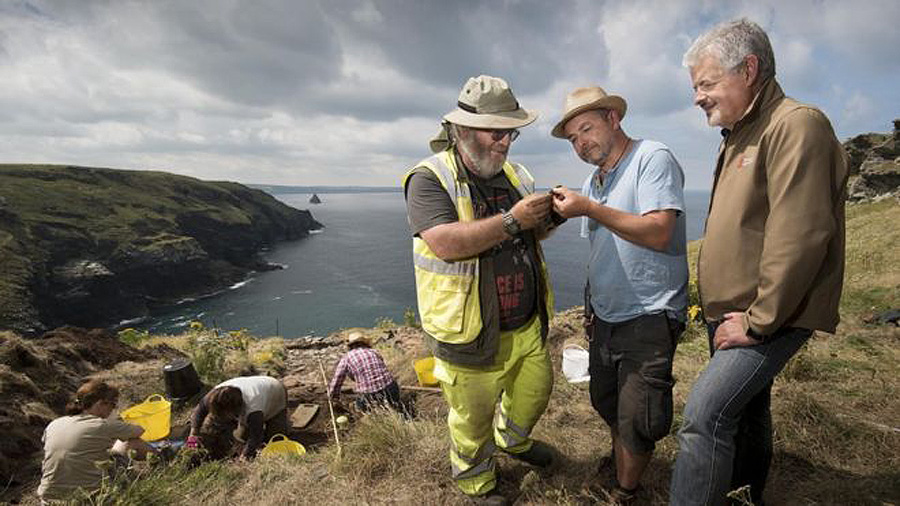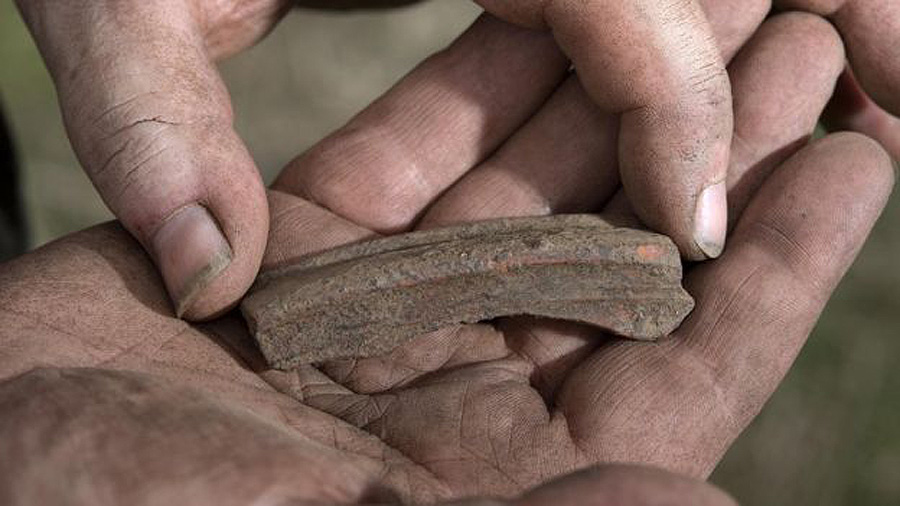
Excavation round Tintagel Castle (gorod Kornuoll). Photo: Emily Whitfield-Wicks/English Heritage

 <= "http://cdn-st3.rtr-vesti.ru/p/nw_1289917.jpg" alt = "">
<= "http://cdn-st3.rtr-vesti.ru/p/nw_1289917.jpg" alt = ""> Ended with img src the first season of excavation in Tintagel – the ancient castle where, on a legend, king Arthur was born. Judging by finds, archeologists managed to find the capital of the whole state and the royal residence of the VI century, reports BBC News .
Tintagel Castle in County of Cornwall in the southwest England never was usual defensive works. When in the XII century Galfrid Monmutsky wrote "Merlin's Prophecies" and "History of kings United Kingdom of Great Britain and Northern Ireland", he hardly assumed as and long-playing consequences will be serious. Galfrid Monmutsky designated Tintagel a place of conception and great king Arthur's birth – and in 1233 Richard, Cornwall first columns gorod Kornuoll, constructed in Tintagel the lock, having consciously given it "more ancient" look. Cornwall first columns gorod Kornuoll, the stranger on these lands, hoped thus to connect the name with the legendary governor and to win a favor of local population. At that time Tintagel any more had no strategic importance so Richard's lock initially was historical scenery.
Wreckwhich are seen by tourists (and Tintagel became popular tourist sight in the middle of the XIX century), are ruins of the lock of Richard of 1233, that is any relation to king Arthur's estimated era they have no. Now Tintagel formally belongs to the duke Kornuollsky – better known as Charles, the prince of Wales. In reality the well-known historical monument is under authority of English Heritage fund ( English Heritage ). This fund approved the five-year plan of excavation in the reserved territory round Tintagel Castle.

Excavation round Tintagel Castle. Extreme on the right — the curator Wynn Skatt. Photo: Emily Whitfield-Wicks/English Heritage
were carried out by span to Tintagele repeatedly, but never before were not so large-scale. The previous finds hinted that "historical scenery" was built 1233 on a place of earlier settlement. The first season of the excavation, taken place in the summer of 2016, confirmed this old hypothesis.
Archeologists found in Tintagel walls of the VI century, about a meter thick. It is supposed that these walls were part of the residence of kings of Dumnoniya. Dumnoniya – not fiction, and one of kingdoms of the Britons, really existing in the IV—VIII centuries in the south England.
Wynn Skatt's( Win Scutt ), the curator of the project from English Heritage fund, reported that Tintagel Dumnoniya's times was very densely populated place:" We found a complex of buildings. In the 1980th many researchers started claiming that in Tintagel the royalty center settled down, and from this center kings governed Dumnoniy. We did not find other similar places so it is quite probable that Tintagel really was the capital of the kingdom and there was a residence of the governor – not seasonal as was considered earlier, and a constant".
Some constructions were found by p in the 1930th, but then them considered as ruins of an ancient monastery. In the 2016th concept completely exchanged. Besides fortifications, there are also other finds speaking about the high status of Tintagel: era glass Merovingov, refined ware from Fokei (nowadays it is Foca to Turkey) and the huge number of ceramics from east Mediterranean – generally is vessels for storage of wine and olive oil.

the Fragment of ceramics found near Tintagel Castle. Photo: Emily Whitfield-Wicks/English Heritage
according to Skatt, tell such finds about a magnificent way of life in Tintagel:" it was not simply trade city through which there were deliveries of olive oil: all goods used on a place, enjoyed them, arranged rich feasts".
withthe Beginning promising, however Wynn Skatt especially emphasized that for the first season of excavation in Tintagel it was not found anything that would have relation to king Arthur or somehow hinted at his existence.
the Legendary king is still imperceptible: in November, 2015 absolutely other group of the British researchers